There are three ways to make a Miniature Labrador, and they are not all equal. You want a smaller family pet, but you also want them to live a long, healthy, happy life. Today we’ll look at the differences between full sized and mini Labs, the impact of breeding them to be shorter, and help you decide whether this is the best pet for you.
- What does it mean to be a miniature Lab?
- Genetic dwarfism in Labradors
- Health problems and tests
- Mini Labrador breeders
Do you love Labradors, but worry about having the space in your life for a full sized adult? Then you could be forgiven for looking for a small Labrador Retriever. One with the perfect Lab personality in a miniature Labrador body.
But do these dream dogs really exist? You’ll certainly find dwarf Labradors and teacup Labs advertised online, so we’ll help you understand what people mean when they claim to be miniature Labrador breeders. And what to expect if you buy one.
What Is A Miniature Labrador?
If you are beginning to search for a Labrador puppy, you will probably have come across a few adverts claiming to be selling Miniature Labradors. The idea being that they are producing an exact replica of the Labrador, but in miniature. A ‘micro Labrador’, if you will.
The idea of this is adorable, but in reality these perfectly formed yet small size Labradors simply don’t exist. There is only one Labrador breed, and that breed has set perimeters for size within the healthy average population.
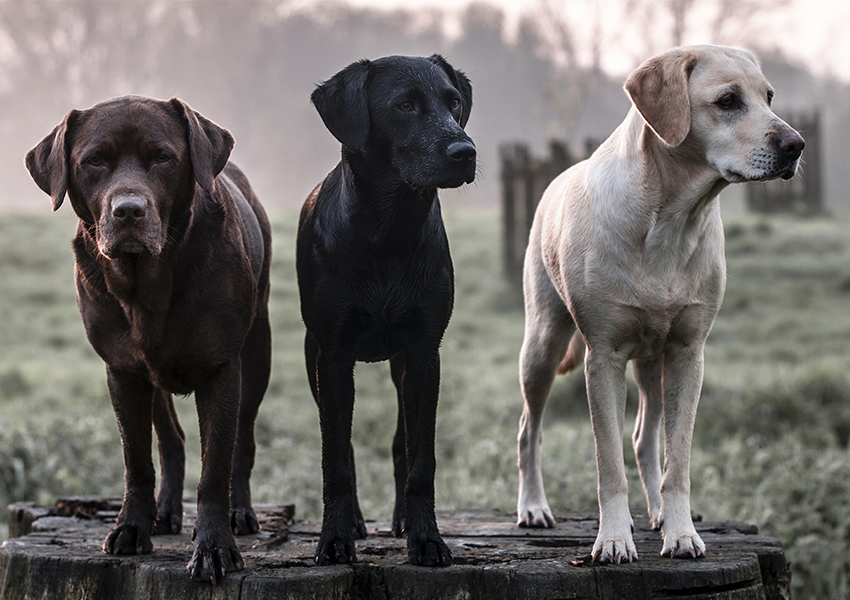
Small Labrador Breed
Small Labrador Retriever breeds or toy Labrador breeds do not exist within the scope of the Kennel Club or any officially recognised dog breeding body. What do exist, are dwarf Labradors. Labradors who carry the gene for dwarfism.
Dwarf Labrador
Dwarfism in Labradors is a known condition. Dwarf Labradors really do exist. In fact, they are more common than most people realise. What the dwarf genes produce is a short legged Labrador, not one that is a completely miniature Lab.
Interestingly, the dwarf Lab might not even have legs that are immediately noticeable as short. If they are not standing next to a Lab without dwarfism, this condition can pass by most casual onlookers. This is because there are two types of dwarf Labrador, caused by two different genes. And they express in slightly different ways.
The important thing to note before we go on, is that whilst dwarf Labs are around, they are not a good thing for the breed or indeed the Labrador affected. As they come with some sad health implications.
Where Do Dwarf Labradors Come From?
Dwarf Labradors are born when two Labrador parents who are carrying the genes for dwarfism produce a litter of puppies. There are two different sets of genes that produce dwarfism in Labradors. These are known as SD1 and SD2.
- SD1, known as osteochondrodysplasia, causes the dwarf Lab to have obviously bent legs.
- SD2, known as skeletal dysplasia, causes the dwarf Labrador Retriever to have shorter legs than average.
It is also possible for puppies to have pituitary dwarfism, which is caused by problems with growth hormone produced by the pituitary gland. The most common type of dwarfism in Labradors is SD2.
Dwarf Labrador Symptoms
All types of dwarfism are associated with health problems, as well as the differences in the visible nature of their legs and potentially other body parts too.
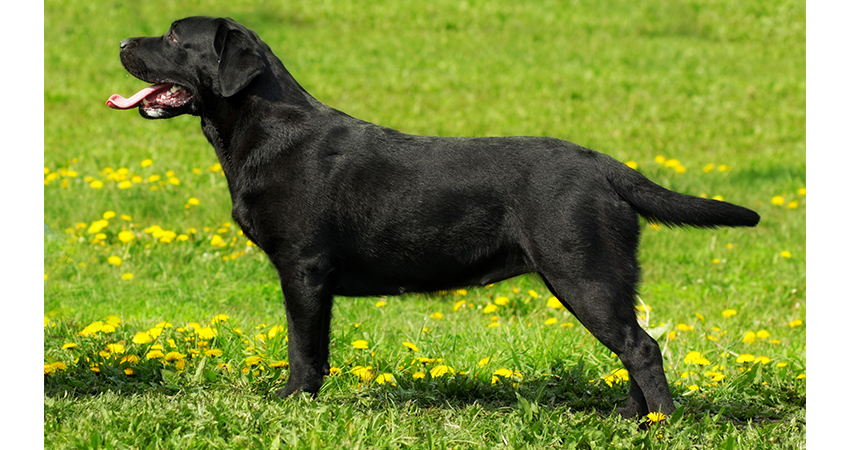
Dwarfism ranges in the extent of the symptoms and their visible outward expression from individual to individual, but some general symptoms include:
- Short legs
- Bowed knees
- Swollen joints
- Turned out feet
- Large head
- Low slung back
Dwarf Labrador Health Problems
SD1 is associated with some rather nasty health problems in Labradors. Their legs appear to be bent because they are malformed. This bone malformation causes them to have problems with their knee and hip joints, which can be painful and crippling. Any type of dwarfism can cause additional health problems to the animal.
Although you associate dwarf Labradors with short legs, they can also have abnormally formed skulls. This can result in breathing problems. They can also have problems whelping, and require c-sections instead of being able to give birth naturally. Disproportionate leg and body lengths, such as seen to an extreme scale in the Dachshund, can also result in spinal problems and painful movements.
Although some dwarf Labradors will live full and happy lives, they are at a greater risk than their unaffected cousins. It is therefore very important that Labrador breeders ensure that they do not breed from Labradors who carry the gene for dwarfism.
Dwarf Labrador Health Tests
Before you buy a Labrador, their breeder should have carried out a variety of health tests on both of the parents. One of the things you should make sure that they have tested for is dwarfism in Labradors.
There is a test available for SD2, which will tell the breeder whether the parent carries the gene. No Lab with the gene should be bred to another with it, as they could result in the puppies having dwarfism.
Miniature Labrador Breeders
A Labrador Retriever small breed is something that has been coined by a few dog breeders to try and cash in on a market of dog lovers who want a small Labrador Retriever to fit into their lives.
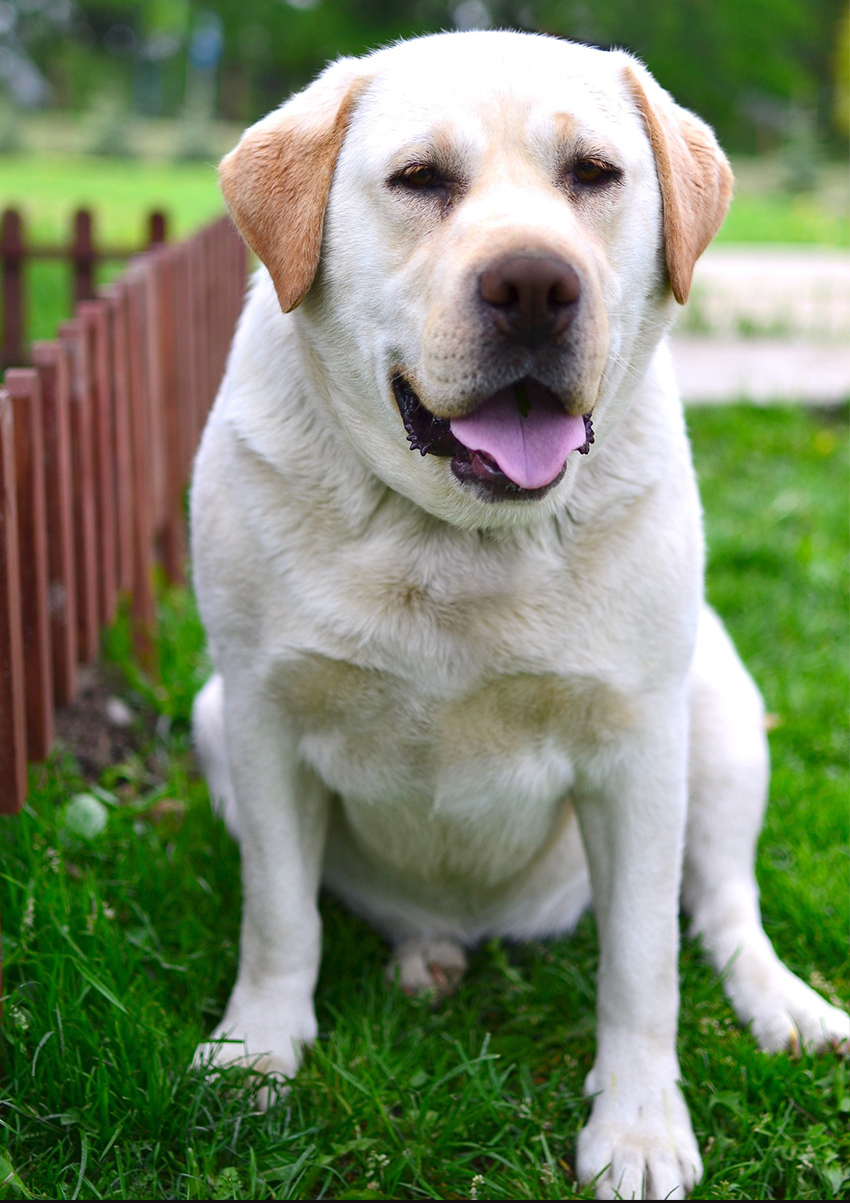
Every month hundreds of people scour the internet looking for a miniature black Lab or miniature chocolate Lab to join their family. And unscrupulous people will take advantage of these people who are innocently putting their faith in them to provide a happy, healthy new friend.
But no knowledgable Labrador breeder will ever advertise a teacup Lab or Miniature Yellow Lab. They will provide you with clear, breed specific information. Those claiming to be miniature Labrador breeders may be producing puppies that carry the Labrador dwarfism gene.
They may have cross bred their lines with a smaller breed of dog. Or they may be producing regular sized Labs and simply giving their customers the misleading impression that they will remain the same size. Your full grown ‘miniature Labrador’ could well end up being exactly the same size as your next door neighbour’s standard Lab.
Words Of Warning From Lab Breeders
If you are researching Labrador breeders, here are some negative buzzwords to keep your eyes peeled for:
- Micro Labrador
- Toy Labrador Retriever
- Mini Labrador
- Miniature Labs
These words demonstrate that the breeder is either lacking knowledge about Labradors or is trying to mislead puppy buyers. Either way, they are not the breeder that you want to approach.
Can I Buy A Small Labrador?
Well, yes, you can. Some Labradors are smaller than others! Within the bounds of usual Labrador size, they are a bit shorter, lighter and just plain littler than other Labs.
You will often find that Field or American Labradors weigh less than Show or English Labs. You will also find that some English Labradors are chunky in build but short in height. Short legs are more fashionable in the show ring at the moment.
For this reason, it’s very important that if you buy an English Lab you ensure that the breeder has had them tested for dwarfism. So this can be removed as the reason for them being shorter legged.
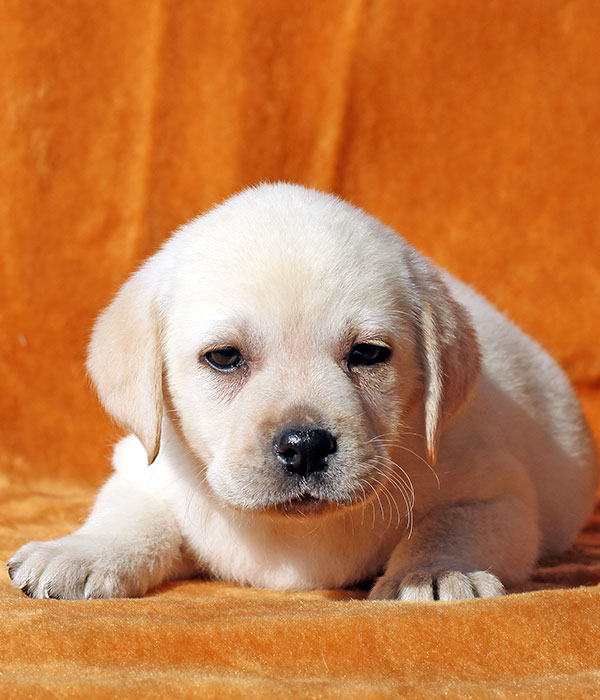
Small Labradors who are simply at the lower end of the normal spectrum can be found from reputable breeders, and they are a good option if you want a Labrador temperament in a slightly smaller package.
The other option is to buy a Labrador mix, who is crossed with a smaller breed of dog. Just make sure that you check out the health tests that are relevant to this breed as well before you commit to the puppy.
Labradors That Stay Small
So smaller than average Labs can be found. But no healthy Labrador will stay small to the miniature extent. Lab puppies that stay really small do so because they are undernourished, ill or have a disease. Even dwarf Labradors are only around 2.5 inches shorter than their fully heighted companions.
If you want a small Labrador Retriever, then think about why. Is it to do with a lack of space, or simply a personal taste issue? Small dog breeds are popular at the moment, but fashions change and the most important part of any pet is their personality and temperament.
I hope that you will decide that a full sized Labrador is worth the loss of space on the couch, in exchange for the love and devotion they will give you for the next ten years.
Find Out More About Labradors!
- Chocolate Labs
- Yellow Labradors
- Black Labrador Retrievers
- Silver Labs
- Red Fox Lab
- Charcoal Labradors
- Champagne Labs
The Labrador Site Founder
Pippa Mattinson is the best selling author of The Happy Puppy Handbook, the Labrador Handbook, Choosing The Perfect Puppy, and Total Recall.
She is also the founder of the Gundog Trust and the Dogsnet Online Training Program
Pippa's online training courses were launched in 2019 and you can find the latest course dates on the Dogsnet website

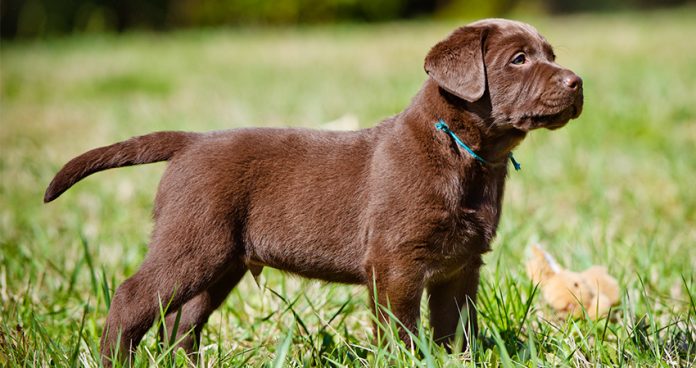
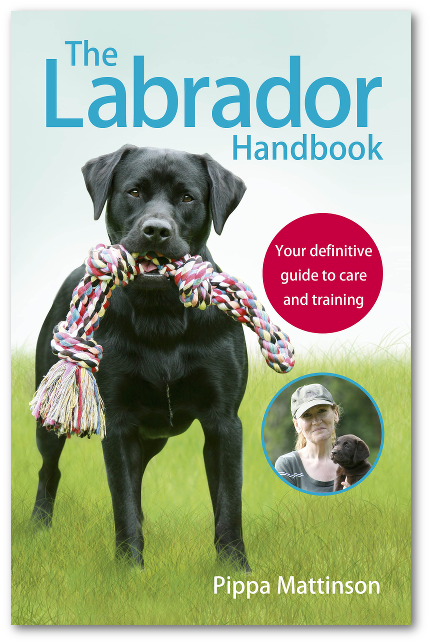



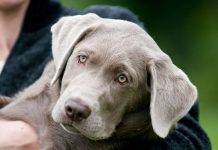


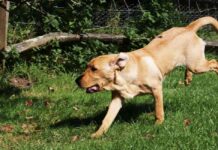
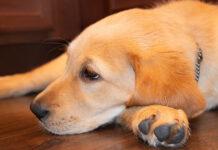









I have two female canoe labs in my kennel at this time. One of the females we bought from a breeder who breeds Canoe labs net dwarf labs.We are starting a new Breeding program for smaller labs. Last spring we bread our canoe lab to a lab who was about
55lb.What we ended up with a litter of 5pups. Each of the pups now way up to 50 pounds, the females are 40.
At our kennel, we bread hunting dogs. One of the reasons we are go to a smaller build dog is because of field stamina.I have Ben a
breeder for 15years. I breed for Health and temperament.The canoe labs we are breeding are not mutants.So yes Martha, there is such a thing as Canoe labs.
Just have a litter of purebred labradors. 1 puppy is runt (super runt) sized. Half the size of other siblings but extremely healthy and cutie pie. A buyer came along to see the puppies. She could not resist to buy the runt puppy when all other puppies were available to choose from. Nothing wrong with having a runt puppy in a litter as it’s pure natural.
I am an avid Labrador Retriever lover and owner. My current sweet heart is nearly one. He is an American and from Champion blood lines. He is an exquisite example of the breed; charming, beautiful, gentle and smiling! It pains me to think of capitalizing on a known genetic mutation that will not only alter a breeds standard but cause harm to their health and overall well being….shame!
Anyone who could betray such a loyal friend, clearly has never loved or bonded with not only mans best friend but the greatest of breeds, the Labrador Retriever.
Well said. We have had two males! Both were awesome. They both have passed. And left holes in our hearts! Tons & Deuce will forever live in our hearts!
My wife purchased our black lab before I met her, she paid a lot of money to get a “miniature black lab”, what she was told was the result of breeding runts of full bred black labs. She didn’t buy our dog (Desi) for breeding or show (and have never attempted either), she bought him just because she thought he was adorable! Desi is now 8 years old who is a Black Lab in every sense of the word, except he’s around 17″ at the head, 14″ at the rump, and somewhere around 28 pounds. He’s extremely happy, healthy, and active (still runs around the yard and plays). He’s loved as much as any dog in the world!!!! I was just wondering if there were any comments concerning this!!!!!!
I asked for the smallest pup in the litter -breeder known for hunting. My son insisted on a chocolate female – grew to 80 pounds- long, wide in the chest and just went duck hunting this morning. Well, we love her anyway. Our biggest regret is we had her spayed at eight months.
As a Labrador breeder for 48 years and an AKC licensed judge as well as a past Veterinary Technician and a professional handler, I would like to clear up somethings. There is a big different in a Labrador that is a dwarf and one that is just small. Certainly small Labs sometimes occur in a normal litter and that’ is fine, no problems there at all. Sometimes a breeder might also choose smaller Labs in their breeding program and inadvertently find that their line of dogs has become smaller. Most breeders try to correct that with future breedings since there is a height standard required for the Labrador in our AKC standard and to keep the breed true to type (looking like a Labrador is supposed to look and being built correctly to do the job for which they are bred). These smaller dogs are still great dogs and can make wonderful pets as well as service dogs. Then there are dwarfs and that is a whole different ball game. Any breeder that cares about the breed would refrain from breeding dwarfs whenever possible because of the health problems genetically linked to dwarfism such as painful joint problems and blindness. I am not saying you have to put these dogs to sleep but you have to be very truthful to the person who is receiving the dog which should not be sold but should be placed in a really good home where the owners are award and willing to pay the necessary vet bills ahead and give the pup a wonderful home as part of the family,living in the house. These dogs must be neutered and never bred. These homes can be very diffilcult to find, but a good breeder must stand behind the dogs they bring into this world assuring they have only the best of life.
Please check out my post below. I’d be very interested in your thoughts!!!!!
Well said 👍🏻
They should be destroyed . It’s hard enough finding a healthy Lab with hunting instincts . Breeding for color is a bad idea . Now dwarf Labs ? What is wrong with you people !
Now that’s a little harsh don’t you think? They definitely should not be bred or sold for the purpose of being genetically smaller. It’s not like breeding a Lab with a different breed to get a smaller dog. I don’t think buyers understand that this is the same as taking humans with something genetically wrong with them, breeding them on purpose, for a certain outcome. But if it happens by chance, have that dog neutered or spayed, and I am sure someone will love that dog unconditionally. No need to destroy the dog unnecessarily.
I agree Sue! Well said!
Would like to hear your thoughts on people who advertise Fox Red or Silver Labs. Neither are AKC recognized as such. I’m on number 4 of Field style bred male Black Labs, all 4 weighed around 80 lbs at 2 years. Best dogs ever home and in the field.
Hi Bob, You might be interested in this article: https://www.thelabradorsite.com/silver-labradors/
Fox red is the legitimate and recognized deepest shade of yellow, and has been in the breed since before Labradors were first registered as adistinct breed in 1903. “Silver” is a dilute affected and the universal position of every Labrador Club, accredited registry and kennel club in the world is that any dilute is the product of mixed ancestry and not purebred.
Hillarious
I’m looking at one at the pound, very short legs-wonderingly if it could be a basset cross, but looks like a lab in every other way. Pretty stocky, concerned how much exercise he’s up to since I want a walking companion.
My 7 mo old little girl is perfectly proportioned for an English. I just wish I could make more of her to last my lifetime but will not. She is a teacup for an English, will never get beyond 40 lbs, runt of the litter. Best. Dog. Ever. Can’t wait to get her on the boat.
My Lab is perfectly proportioned and extremely healthy, a bit on the muscular side. She weighs 45 lbs at 2 years old.
I lost my wonderful lab Kea, she was 14 and the best girl. I’m recovering from a coma and spend long days alone while husband at work. A week after losing Kea (and really way too quickly) we were offered a lab to rehome FOC. 6 years old, having had a couple of litters, well we agreed and 7hr round trip home we came with the smallest lab I’ve ever seen. When she was walked to the car I nearly said no, not for us, too small but obviously your heart wins out. She is a Perfect lab, no sign of dwarfism just small. Her head is small, chest, legs but big feet ???? She is learning to become my companion, she’s starting to play, getting excited for husband to walk her and developing well everyday. She just looks like an adolescent not a 6 year old ????
My 14 month old red boy is just over 50lbs perfectly proportioned from working line … fed a salmon based diet … very fast and wouldn’t change a thing. Why mess with it?
My 14 month old red boy is just over 50lbs … working line and perfectly in proportion … fed on salmon based diet and a lovely dog.
I really don’t like the idea of breeding animals to be be smaller than normal. Mainly because there are so many dogs out there already that end up in pounds and rescue operations and before you can get a dog to be the size they want, there are a lot of mistakes. I think if someone wants a smaller animal there are a lot of choices in other smaller breeds. And while they may not be labs, they are just as sweet and precious and so I say, leave the playing with lives to the man upstairs and lets take care of the ones we already have. There are too many questions and uncertainties when you start messing with stuff like that, and who suffers but the animals?
most all of these tiny dogs being bred now specifically to make them smaller and smaller have considerable health problems. Mutating natural creation is not a good thing. Want a small dog, get a small breed?!
I was blessed with two wonderful Labs: Jake, a gorgeous big boy, he was 102 lbs, 28″ at the withers, a fox red. His parents were both field champs. He was muscular, smart, friendly, swam like a speedboat, trained easy, a perfect lab. Candy, was a smaller yet spunkier girl, 80 lbs, 24″ at the withers, a light cream. She was fast, athletic, and very competitive, smart, and friendly. Jake passed in Jan 2009, 3 days before his 14 birthday, age related. candy passed at 10 1/2 same year from cancer. She missed her Jake something fierce. I miss them both. Euthanasia may be called humane, it hurt so much to hold them. I felt so guilty for a while.
My baby boy is 55 lbs at 12 months, he hasn’t gained a pound in the last 2 months. He is beautiful with a blocky head, active, a fast runner, happy and healthy. He appears perfectly normal (no short legs or bad posture), just a bit small. His dad was a 85 lb show dog, his mom was 60lbs. He looks just like his mom apart from his blockier head.
My Lab mix of 14 years was a small girl. She was German Short Haired mixed with Chocolate Lab. I was always at ends with my mom who claimed she was the English while I believed she was just a runt. Whether dwarf or English, she was my baby and my world and she is gratefully missed.
Please provide some specifications so that a person can tell if their dog can possibly be considered as a miniature lab, dwarf lab, etc. My 4 y.o. English lab is much smaller than my field lab, of course. When I got her one year ago I did some research and discovered that 55 lbs. is the low end of the weight range for female English labs…my girl weighs 57 so I think she’s just small.
Many people aren’t aware mini Labs are not a good thing and are actually a genetic disorder. People see a small, cute Lab and think it’s a rarity. I’ve seen a few really adorable looking dwarf Labs (mini Labs) but know what their makeup contains. Great point in directing people to consider an American Lab if they want a smaller framed Labrador. Genetic testing is becoming a much more utilized tool by Lab breeders than before. Very useful in helping further the health of the breed’s lines. This post will be a good reference to give people when educating them about dwarf Labs.
I had the opposite problem. I bought a charcoal lab puppy. I fed it Royal Canin Puppy food for large puppies. He started growing too fast! His legs got longer and longer so fast. His vet changed his food to see if that was causing the problem. He went from a 39lb. lap puppy to 68lb.s 4 weeks later. The vet asked if it was the same dog.
I just wanted a lab and got lucky. She’s perfect in every way but just stopped growing at 8 months. Never over 50 pounds now, at 5 years old.
See her at:
I’ve recently adopted a dwarf lab from a rescue centre n had no idea they even existed. She has bow legs and a small head. She is almost blind but that doesn’t stop her. She’s a lab in every way. Very interesting article thanks.